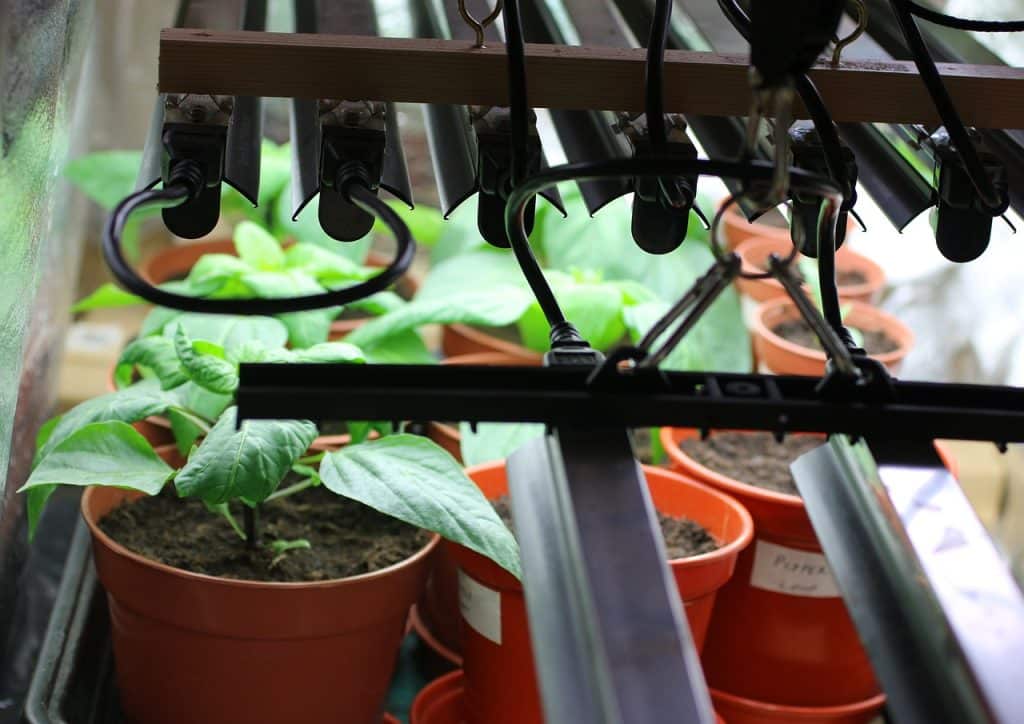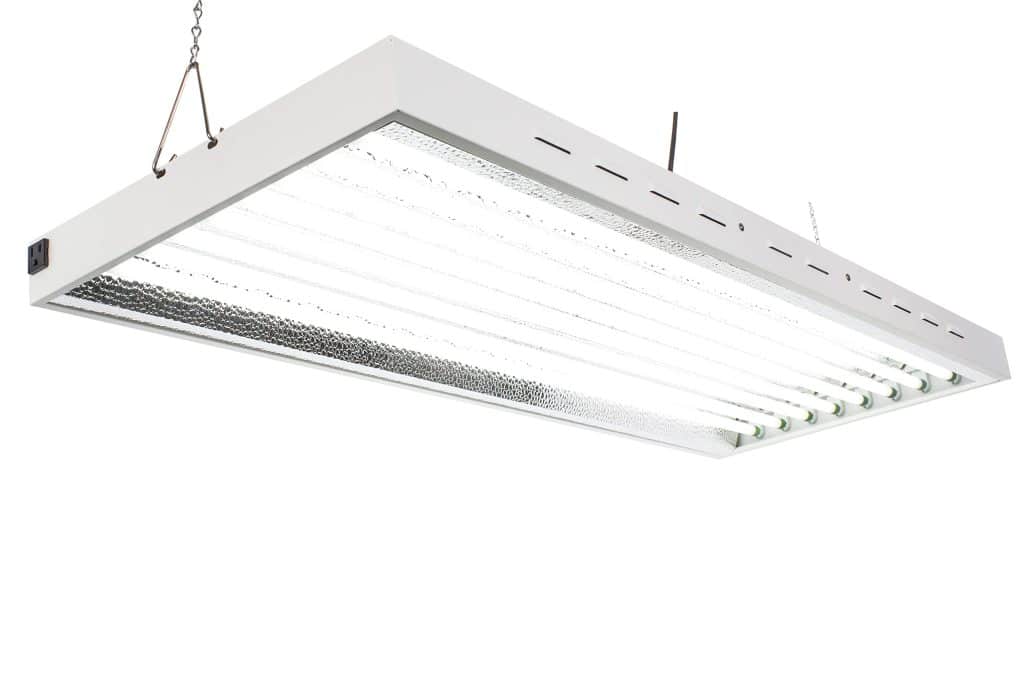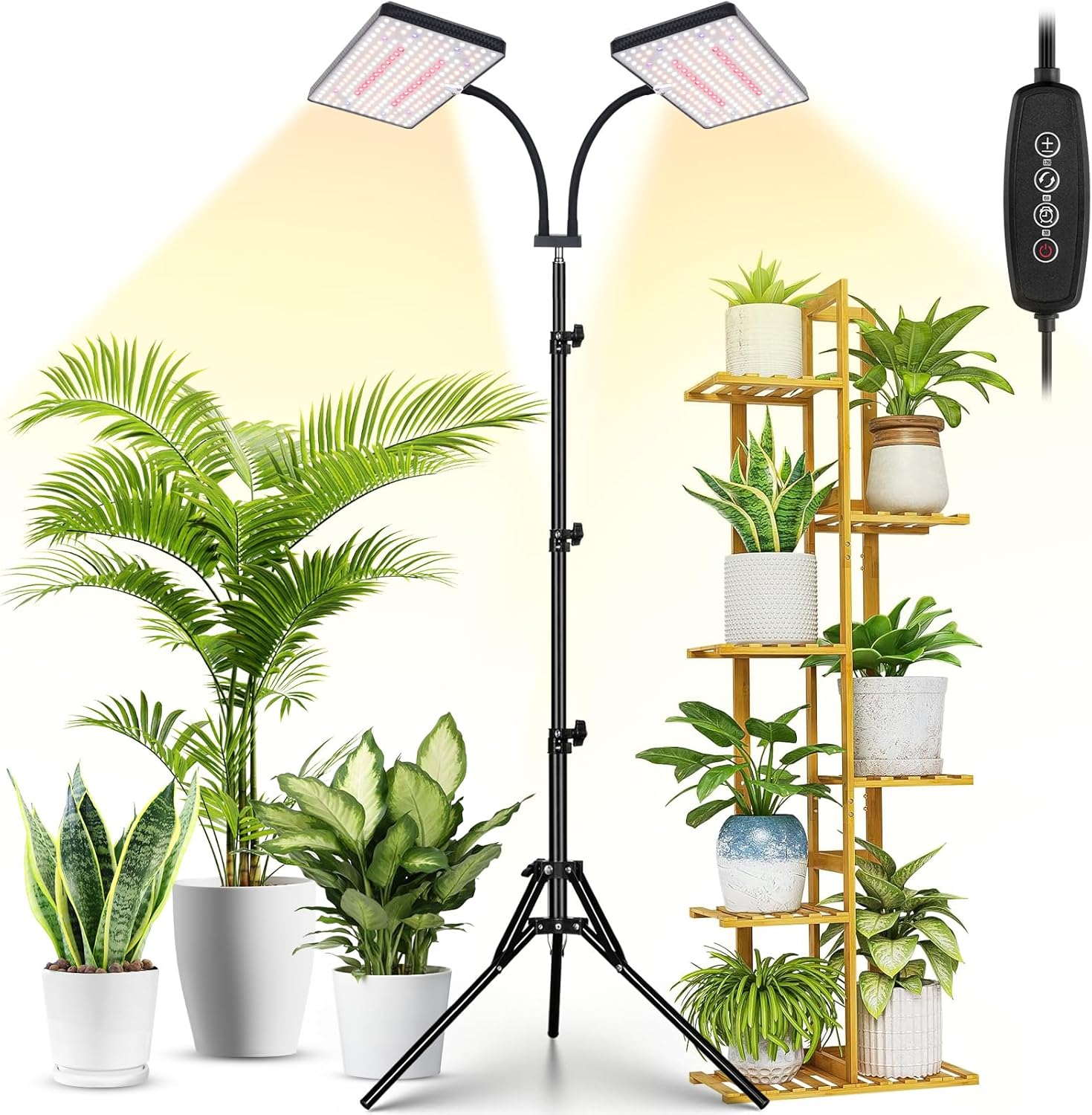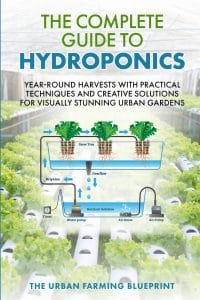In the absence of natural sunlight, Grow Lights for Hydroponics serve as the primary source of energy for photosynthesis, making them the lifeline for plant growth. Selecting the right grow light is essential to maximizing yield, maintaining plant health, and optimizing energy efficiency. Factors such as light spectrum, intensity, and duration play a significant role in supporting various growth stages, from seedlings to harvest.
This guide will provide you with everything you need to know about choosing and using Grow Lights for Hydroponics, helping you create the perfect indoor environment for your plants to thrive. With the right setup, you can achieve vibrant, productive growth year-round, regardless of natural light availability.
Types of Grow Lights
When choosing Grow Lights for Hydroponics, it’s crucial to understand the different types available, as each comes with distinct advantages and drawbacks that influence plant growth, energy consumption, and installation requirements.
LED grow lights, for instance, are highly efficient and long-lasting, offering customizable light spectrums tailored to different growth stages. While they tend to have a higher upfront cost, their energy efficiency and low heat output make them a popular choice for both beginners and experienced growers.
HID (High-Intensity Discharge) lights, such as Metal Halide (MH) and High-Pressure Sodium (HPS), provide intense light output and are often used for larger-scale operations. However, they consume more energy and generate significant heat, requiring additional cooling systems.
Fluorescent grow lights, like T5 tubes, are affordable and ideal for small setups or starting seedlings, but they lack the intensity needed for mature, high-yielding plants.
By understanding these options and their implications, you can select the best Grow Lights for Hydroponics to suit your system’s needs and maximize the health and productivity of your plants.
1. LED Grow Lights

LED (Light Emitting Diode) grow lights have emerged as the gold standard in hydroponics, thanks to their exceptional energy efficiency and the ability to provide a customizable light spectrum tailored to each stage of plant growth. These lights deliver precise wavelengths ideal for photosynthesis, promoting healthier and faster growth compared to traditional lighting options.
In addition to their efficiency, LED grow lights produce minimal heat, reducing the need for cooling systems and lowering overall operational costs. Their long lifespan and versatility make them a favorite among hydroponic growers, from hobbyists to professionals.
Whether you’re cultivating leafy greens, fruits, or flowers, LED grow lights for hydroponics offer the perfect balance of performance, durability, and sustainability, making them an indispensable tool in modern indoor gardening.
- Pros: Low heat output, long lifespan, adjustable spectrum, energy efficient.
- Cons: Higher upfront cost.
- Best For: All stages of plant growth, from seedlings to flowering.
Discover the Top 5 LED Grow Lights for Hydroponics
2. HID Grow Lights
HID (High-Intensity Discharge) lights, which include MH (Metal Halide) and HPS (High-Pressure Sodium) options, have long been traditional favorites among hydroponic growers for their intense light output and proven effectiveness.
Metal Halide (MH) lights emit a cooler, bluish light that is ideal for the vegetative stage, promoting strong, leafy growth. On the other hand, High-Pressure Sodium (HPS) lights produce a warm, reddish spectrum that supports flowering and fruiting, making them a go-to choice for the later stages of plant development.
While HID lights deliver excellent results, they come with trade-offs. They consume more energy compared to newer technologies like LEDs and generate significant heat, requiring robust cooling systems to maintain optimal growing conditions. Despite these challenges, their affordability and high output make them a reliable option for growers seeking to maximize yields in hydroponic systems.
- Pros: High light intensity, effective for flowering and fruiting stages.
- Cons: High heat output, shorter lifespan, higher energy consumption.
- Best For: Large-scale setups and flowering plants.
Compare: HID vs. LED Grow Lights
3. Fluorescent Grow Lights

Fluorescent lights, including T5 tubes and compact fluorescent bulbs (CFLs), are an affordable and beginner-friendly option for hydroponic growers. These lights emit less heat than other types, reducing the risk of overheating plants and eliminating the need for extensive cooling systems.
Their gentle light output makes them ideal for starting seedlings, propagating clones, or growing small plants like herbs and leafy greens. T5 fluorescent lights, in particular, are popular for their slim design and ability to deliver a balanced light spectrum for healthy early-stage growth.
While fluorescent lights are budget-friendly and easy to set up, they lack the intensity required for supporting larger plants or high-yield crops during flowering and fruiting stages. For beginners or growers with small-scale systems, they offer a convenient entry point into the world of hydroponic lighting solutions.
- Pros: Low cost, minimal heat, good for small spaces.
- Cons: Limited light intensity, less effective for flowering stages.
- Best For: Seedlings, herbs, and leafy greens.
Light Spectrum and Plant Growth
Plants rely on specific wavelengths of light for optimal growth, and understanding the light spectrum is key to tailoring Grow Lights for Hydroponics to meet your plants’ needs. Here’s How to Grow Seeds for Hydroponics: A Step-by-Step Guide different parts of the light spectrum affect various growth stages:
- Blue Light (400–500 nm): Crucial during the vegetative stage, blue light promotes robust leaf development and compact, bushy growth. It helps plants establish a strong structure, making it ideal for leafy greens and young plants.
- Red Light (600–700 nm): Essential for flowering and fruiting, red light encourages blooming, fruit production, and overall plant maturity. It plays a significant role in increasing yields during the reproductive stage.
- Full-Spectrum Light: Mimicking natural sunlight, full-spectrum grow lights combine multiple wavelengths to support plants throughout all growth stages, from seedling to harvest. This versatility makes them a popular choice for growers seeking simplicity and convenience.
By matching your Hydroponic Nutrient Solutions with the appropriate light spectrum, you can optimize plant health, maximize yields, and ensure each growth stage receives the specific wavelengths required for success.
Related Article: How to Choose the Right Light Spectrum for Plants
Setting Up and Using Grow Lights Effectively
Proper installation of Grow Lights for Hydroponics is crucial for promoting plant health and maximizing energy efficiency. Follow these tips to achieve optimal results:
- Positioning: Place the grow lights at the appropriate distance from your plants. Too close, and the lights may cause heat stress or leaf burn; too far, and plants may not receive adequate light intensity for growth. Adjust based on the type of light and growth stage, typically keeping LEDs closer and HID lights further away.
- Coverage: Ensure the light footprint covers the entire growing area evenly. Overlapping light sources can eliminate dark spots, ensuring all plants receive sufficient illumination.
- Height Adjustment: Use adjustable fixtures to modify light height as plants grow. This maintains the ideal distance for consistent light exposure throughout each growth stage.
- Timers: Automate your grow lights with timers to maintain a consistent light cycle. Different stages require specific photoperiods—for example, 16-18 hours of light during the vegetative stage and 12 hours during flowering.
- Reflection: Maximize light efficiency by using reflective materials like Mylar or white walls around the grow area. This redirects wasted light back onto the plants, improving overall energy use.
By carefully setting up and maintaining your Grow Lights for Hydroponics, you can create an environment that fosters vigorous plant growth while keeping energy costs manageable.
Cost and Energy Efficiency Considerations
Grow Lights for Hydroponics can have a noticeable effect on your electricity bill, but with smart choices, you can manage costs effectively. Here’s how:
- Choose Energy-Efficient Lights: Opt for LED grow lights, which consume significantly less power compared to traditional HID or fluorescent lights. Their higher upfront cost is offset by long-term energy savings and reduced heat output.
- Use the Right Intensity: Avoid overlighting your plants by matching light intensity to the specific needs of your crops and growth stage. Using dimmable lights or adjusting the height can help control energy usage.
- Optimize Light Duration: Program your grow lights with timers to maintain appropriate photoperiods, such as 16-18 hours for vegetative growth and 12 hours for flowering. This prevents unnecessary energy consumption.
- Reflect and Focus Light: Use reflective materials or focused light fixtures to direct as much light as possible onto your plants, reducing wasted energy and enhancing efficiency.
- Scale to Fit: Choose grow lights with coverage areas that match your growing space. Oversized or unnecessarily powerful lights will increase energy consumption without benefiting your plants.
By carefully selecting and managing your Grow Lights for Hydroponics, you can maintain a productive indoor garden while keeping energy costs under control.
Final Thoughts
Grow Lights for Hydroponics can have a noticeable effect on your electricity bill, but with smart choices, you can manage costs effectively. Here’s how:
- Choose Energy-Efficient Lights: Opt for LED grow lights, which consume significantly less power compared to traditional HID or fluorescent lights. Their higher upfront cost is offset by long-term energy savings and reduced heat output.
- Use the Right Intensity: Avoid overlighting your plants by matching light intensity to the specific needs of your crops and growth stage. Using dimmable lights or adjusting the height can help control energy usage.
- Optimize Light Duration: Program your grow lights with timers to maintain appropriate photoperiods, such as 16-18 hours for vegetative growth and 12 hours for flowering. This prevents unnecessary energy consumption.
- Reflect and Focus Light: Use reflective materials or focused light fixtures to direct as much light as possible onto your plants, reducing wasted energy and enhancing efficiency.
- Scale to Fit: Choose grow lights with coverage areas that match your growing space. Oversized or unnecessarily powerful lights will increase energy consumption without benefiting your plants.
By carefully selecting and managing your Grow Lights for Hydroponics, you can maintain a productive indoor garden while keeping energy costs under control.
For further insights, check out these related articles:


